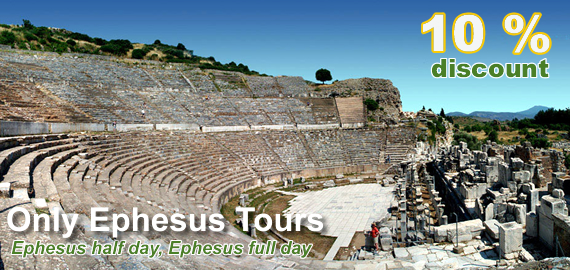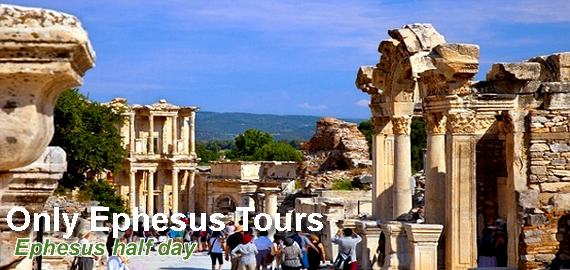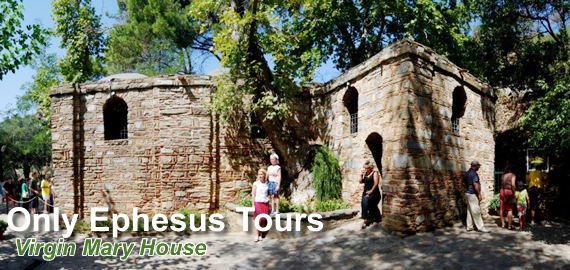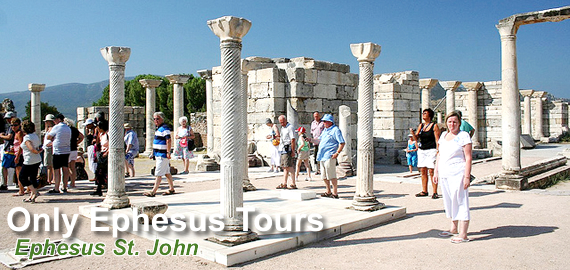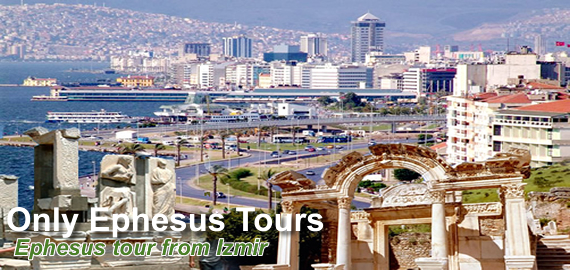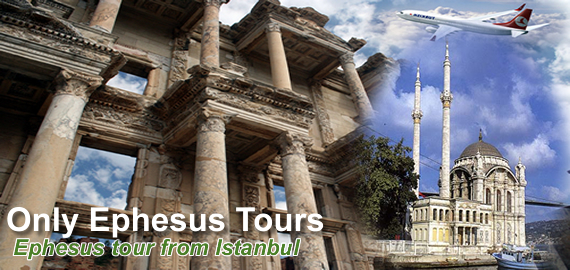Ephesus Symbol - Ephesians - About Ephesus - Ephesus information
 Bee Goddess of the Ephesians - Ephesus Symbol Ephesians
Bee Goddess of the Ephesians - Ephesus Symbol Ephesians
The Mother Goddess, Artemis Of the Ephesians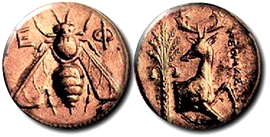
Bee Goddess of the Ephesians
Coins of Ephesos often show the Bee
and Stag, emblems
of Artemis Ephesia. These date to around 300 BCE.
Another version of the Bee and Stag
coin,
circa
330 BCE. At right, Bee Goddess
ornaments from Camiros, Island of Rhodes
(off the southwest coast of Turkey).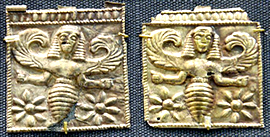
The Mother Goddess, Artemis Of the Ephesians
Artemis is the name given to a divinity worshipped for centuries in
the Mediterranean world. Kubala, recognized as Mother Goddess throughout
the whole of Mesopotamia, was referred to in the Phrygian language as
Cybele. The cult of the goddess had spear from Anatolia to Mesopotamia,
Syria, Lebanon and Palestine, thence to Egypt and from the Aegean
Islands to Crete. It can also be traced in Greece and Italy as well as
in the northern countries. This goddess, who symbolized the soil and its
fruitfulness and the fertility of nature, wa s
worshipped under various names at various times and in various places.
Although there is no definite information regarding the development of
this cult in Ephesus, Artemis is clearly regarded in the Homeric eulogy
as an Ionian goddess.
s
worshipped under various names at various times and in various places.
Although there is no definite information regarding the development of
this cult in Ephesus, Artemis is clearly regarded in the Homeric eulogy
as an Ionian goddess.
One of the constant attributes of the goddess is the number three.
Artemis is regarded as virgin, wife and mother. "The whole of nature was
subject to this primitive goddess. It is by her orders that the earth
brings forth fruit and flowers. She rules the elements, the air, the
earth and the sea. She governs the life of the animals, she tames the
wild beasts and prevents their extinction . She assists in birth.
Homer calls her "the goddess of wild animals". Artemis became the
tutelary goddess of Marsilia, Carthage and the cities of the Near East.
As the ruler of civilization she wore a head-dress crowned with city
towers. Each year, she was celebrated almost everywhere in great
festivals as the fertility goddess and granted innumerable prayers. She
was described as the "bee goddess" and on one side of the Ephesus coins
was to be found the queen bee as the symbol of Artemis. The hymn written
by Callimachus to Artemis ends with a sentence describing the Amazon
dance. "Let no one refrain from the annual dance of Artemis". The annual
festival of Artemis lasted for a month, during which time people came
pouring into Ephesus from the four corners of the known world to take
part in the entertainments, dances and commercial activities."
The first temple dedicated to Artemis was completed in 625 B.C. and
destroyed during the Cimmerian invasions.
According to Pliny, this imposing building was destroyed and rebuilt
nine times. This archaic building possessed marble columns, some of
which were donated by Croesus, King of Lydia. An older building was
unearthed with the same plan and dimensions, remains from which are now
preserved in the British Museum. Three other floors belonging to the old
building were unearthed by David George Hogarth, who was in charge of
the excavations carried out here in 1904-1906 on behalf of the same
museum. The coins discovered in the lowest floor date from the 6th
century B.C. The later Artemission was built in 564-540 B.C. The most
distinguished artists and architects of the day, Scopas, Praxiteles,
Polycleitos, Phidias, Cresilas, Cydon and Apellas, combined to produce a
magnificent building four times the size of the Parthenon in Athens.
Appeles was responsible for the picture "Aphrodite Anadiomene" within
the temple. According to Pliny's Naturalis Historia, this was an Ionic
temple measuring 200 x 425 m with 127 columns reaching a height of 20 m.
Regarded as one of the Seven Wonders of the World, the building is said
to have been destroyed by a madman by the name of Herostratos who burned
down the temple in order to immortalize his name. Alexander the Great,
on his way to the Persian campaign, offered to defray the expenses of
the restoration of the building provided he might be permitted to make
the dedicatory inscription in his own name, but the Ephesians declined
the offer on the grounds that it was not fitting for a temple to be
dedicated to two gods, thus refusing t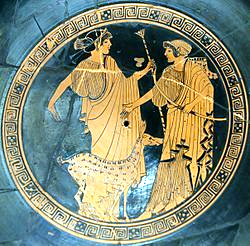 he
offer without hurting his pride. The new temple, built in the years
334-260 B.C., was the largest Greek temple then in existence.
he
offer without hurting his pride. The new temple, built in the years
334-260 B.C., was the largest Greek temple then in existence.
It was erected on the foundations of the older temple and was thus
exactly the same size, but owing to the marshy nature of the land it was
raised on a crepidoma of sixteen steps. It lay on an east-west axis on a
peninsula surrounded on three sides by the sea with sacred harbors,
allowing ships to be moored directly to the steps of the temple. The
architects of the first building built by Croesus were Chersiphron and
Metesenes, while Critocrates and Gritocrates are said to have been the
architects respocible for the 4th century B.C. building. The temple was
destroyed by the invading Goths in 262 A.D. and never rebuilt. The
Temple of Artemis was a prototype of the Ionic style. The Artemission was
first and foremost a religious institution. A large number of priests
and priestesses lived in the temple. Coins were minted there, credit
given and a type of banking carried out.
Festivities were held in May each year' to celebrate the birthday of the
goddess. Until the spread of Christianity and monotheism, Ephesus was a
place of pilgrimage. Moreover, all sorts of criminals and wrong-doers
found sanctuary in the temple, whose sanctity was respected by all the
rulers of Western Anatolia. When St Paul arrived in Ephesus preaching a
belief in one god, he was confronted by the Ephesians chanting their
slogan "Great is Artemis of the Ephesians", but when, in the Christian
era, the worship of their goddess was finally prohibited, they
transferred some of the attributes of Artemis to the Virgin Mary.
Excavations:
The first temple was unearthed in excavations carried out on behalf of
the British Museum in 1869-74 by J.T. Wood, who was employed at that
time on the construction of the railroad. A corner of the temple was
discovered in 1869. The finds were transported first to Izmir then via
Venice to London. At the present day the most important of the finds
from the temple are preserved in the British Museum. According to old
sources some of the architectural elements from the temple were employed
in the construction of the basilica of Aya Sofya.


